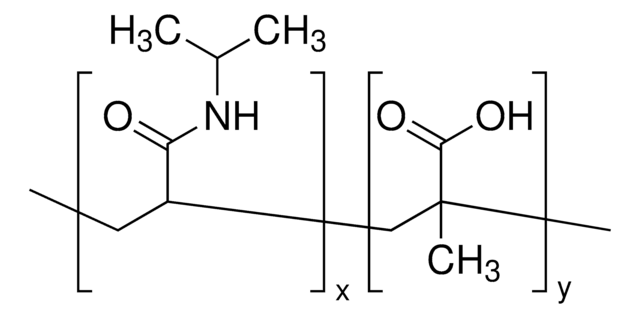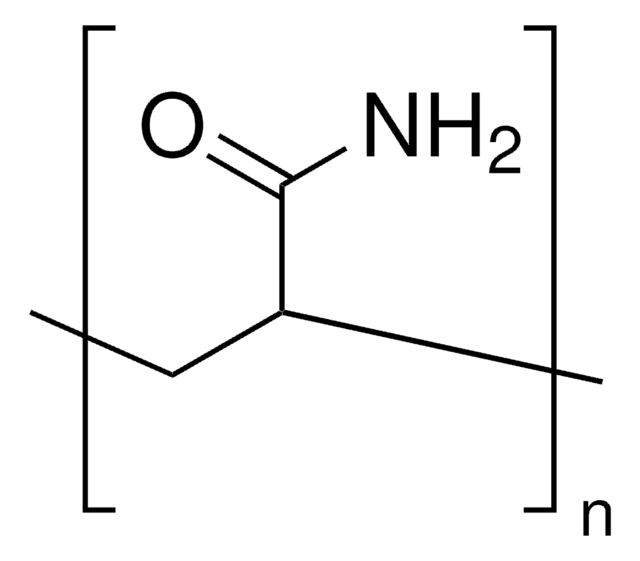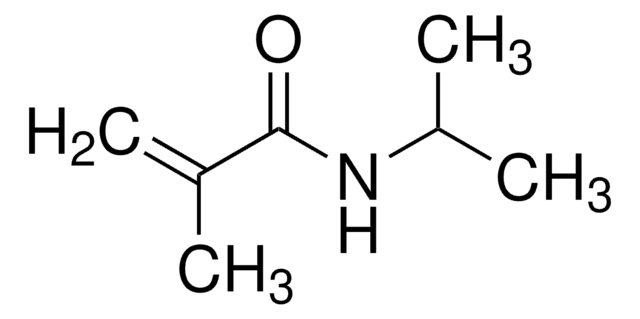535311
Poly(N-isopropylacrylamide)
Mn ~40,000
Sinonimo/i:
NIPAM polymer, PNIPAM, Polyacrylamide, polyNIPAM
About This Item
Prodotti consigliati
PM
Mn 20,000-60,000
Mn ~40,000
Livello qualitativo
Punto di fusione
96 °C
Stringa SMILE
CC(C)NC(=O)C=C
InChI
1S/C6H11NO/c1-3-5-7-6(8)4-2/h4H,2-3,5H2,1H3,(H,7,8)
WDFKEEALECCKTJ-UHFFFAOYSA-N
Cerchi prodotti simili? Visita Guida al confronto tra prodotti
Categorie correlate
Applicazioni
Stato fisico
Codice della classe di stoccaggio
11 - Combustible Solids
Classe di pericolosità dell'acqua (WGK)
WGK 1
Punto d’infiammabilità (°F)
Not applicable
Punto d’infiammabilità (°C)
Not applicable
Dispositivi di protezione individuale
Eyeshields, Gloves, type N95 (US)
Scegli una delle versioni più recenti:
Possiedi già questo prodotto?
I documenti relativi ai prodotti acquistati recentemente sono disponibili nell’Archivio dei documenti.
I clienti hanno visto anche
Articoli
Universal Platform for Surface Modification Employing Grafted Polymer Layers
Poly(N-isopropylacrylamide), or PNIPAM, is a stimuli-responsive polymer that responds to changes in pH and temperature and has a LCST around 32 C.
Tissue engineering has become a key therapeutic tool in the treatment of damaged or diseased organs and tissues, such as blood vessels and urinary bladders.
By altering the physicochemical properties, smart or intelligent drug delivery systems can be designed to deliver therapeutic molecules on-demand. Learn more about the application of stimuli-responsive materials in drug delivery.
Global Trade Item Number
| SKU | GTIN |
|---|---|
| 535311-10G | 4061832565125 |
Il team dei nostri ricercatori vanta grande esperienza in tutte le aree della ricerca quali Life Science, scienza dei materiali, sintesi chimica, cromatografia, discipline analitiche, ecc..
Contatta l'Assistenza Tecnica.








